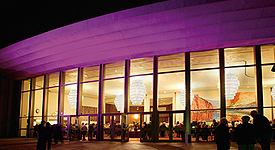The Chandler Municipal Airport tracks aircraft noise concerns to assist in land use planning, help identify concerns, and facilitate communication between pilots and community members. Please be aware that noise concerns do not directly influence aircraft flight paths and, in most cases, do not result in any action against specific pilots or aircraft.
Per federal law, only the Federal Aviation Administration (FAA) has authority over civilian aircraft in flight.
The most efficient way to reach the FAA with your noise concern is to visit Western-Pacific Region Aircraft Noise and Community Involvement Information.
Submit an Aircraft Noise Concern
To submit an aircraft noise concern, please use the form below or call the Airport Noise Events HotLine at 480-782-3550. All concerns submitted online or by phone are compiled and reported to the Chandler Airport Commission on a monthly basis. Please note that any information submitted through this website may be subject to a public records request.
Aircraft Identification/Recognition
When submitting aircraft noise complaints to the airport or low-flying aircraft complaints to the FAA, it is important to identify the aircraft accurately with as many of the following items as possible:
- Registration Number - can sometimes be visible on the tail or fuselage. Most of the aircraft will have a registration number beginning with the letter “N”. If you have the registration number, the airplane’s information, including the owner, can be found at the FAA’s database.
For fixed-wing aircraft:
- Aircraft Type: Jet or Propeller engines
- Number of engines: Single engine or multiple engines
- Engine locations: On the wings or body of the plane (fuselage), at the tail or at the front.
- Type of wing:- Straight wing or swept back (if fixed wing)
- Wing mounting: High Wing (on top of the fuselage) or Low Wing (on the bottom of the fuselage)
- Landing Gear:- Retractable Gear (typically only visible during takeoff or landing) or Fixed Gear (visible at all times)
- Color of Aircraft
2008 - 2010 FAR 150 Noise Study Initiative
FAR Part 150 is a voluntary program that many U.S. airports perform periodically to determine the noise impact of their current and future planned operations on the surrounding neighborhoods. The study was updated in 2009 and submitted to the FAA for review.
FAA Traffic Pattern Airspace/Flight Paths
FAA Traffic Pattern Airspace is an area around the airport, as defined by the FAA where air traffic overflight can be expected as it approaches and departs the airport. Flight paths vary depending on a variety of factors including origin/destination, wind conditions, aircraft performance characteristics and other aircraft in the traffic pattern. Aircraft may approach and depart the airports from any number of directions. While air traffic may be generalized and depicted by single tracks on a map, it is, by nature, dispersed.



